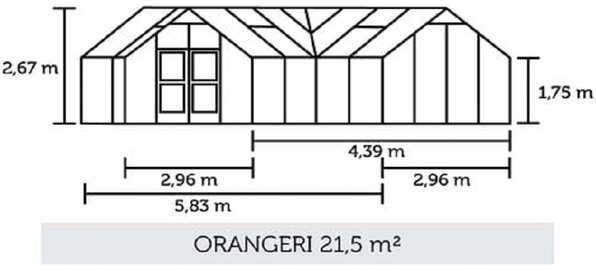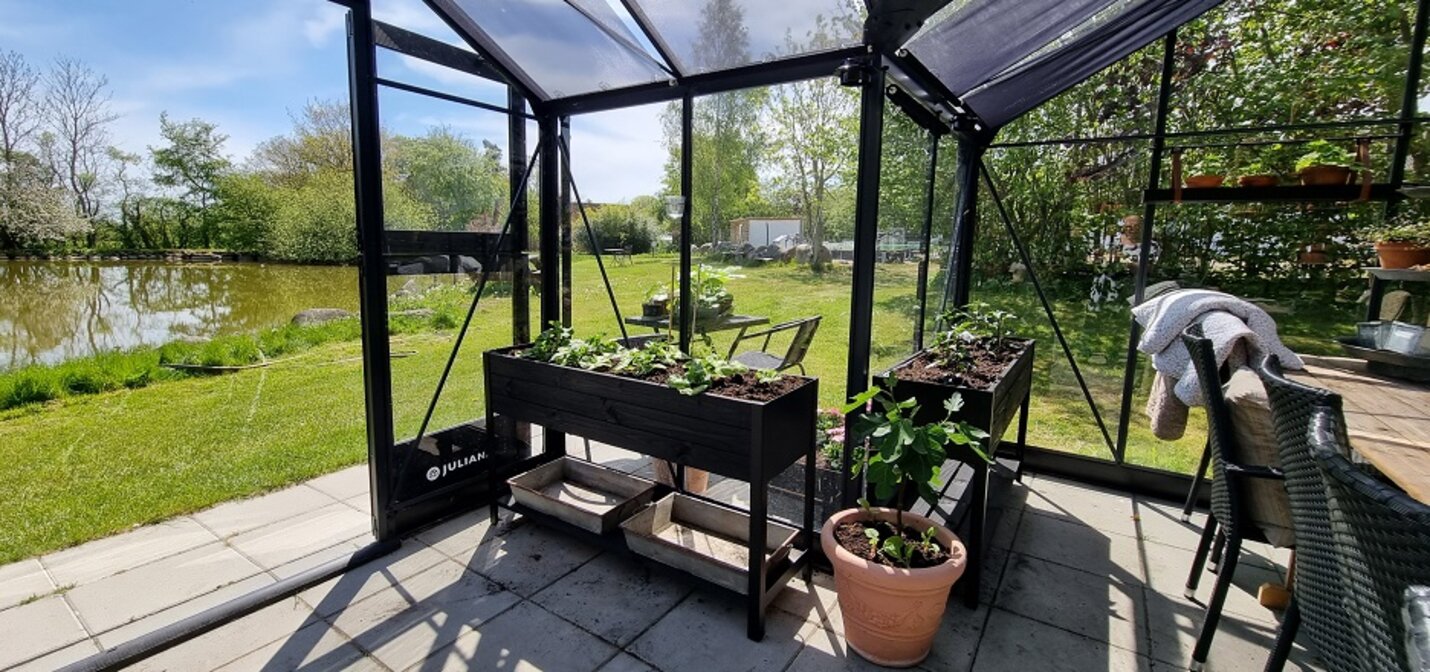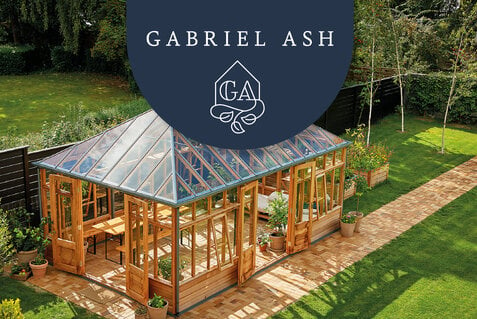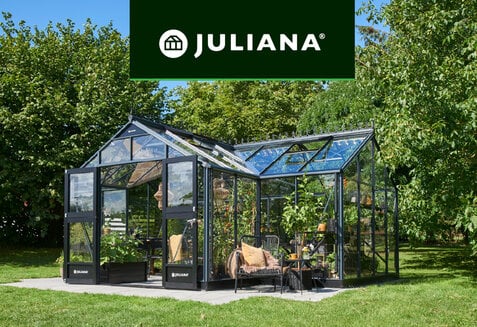The Structure of a Greenhouse
Greenhouse expert Christine Wiemann from Spirekassen talks about the optimal greenhouse structure and construction. Knowledge about the structure and different components of a greenhouse is important to be able to choose a model with the best light exposure, indoor climate and a solid structure.
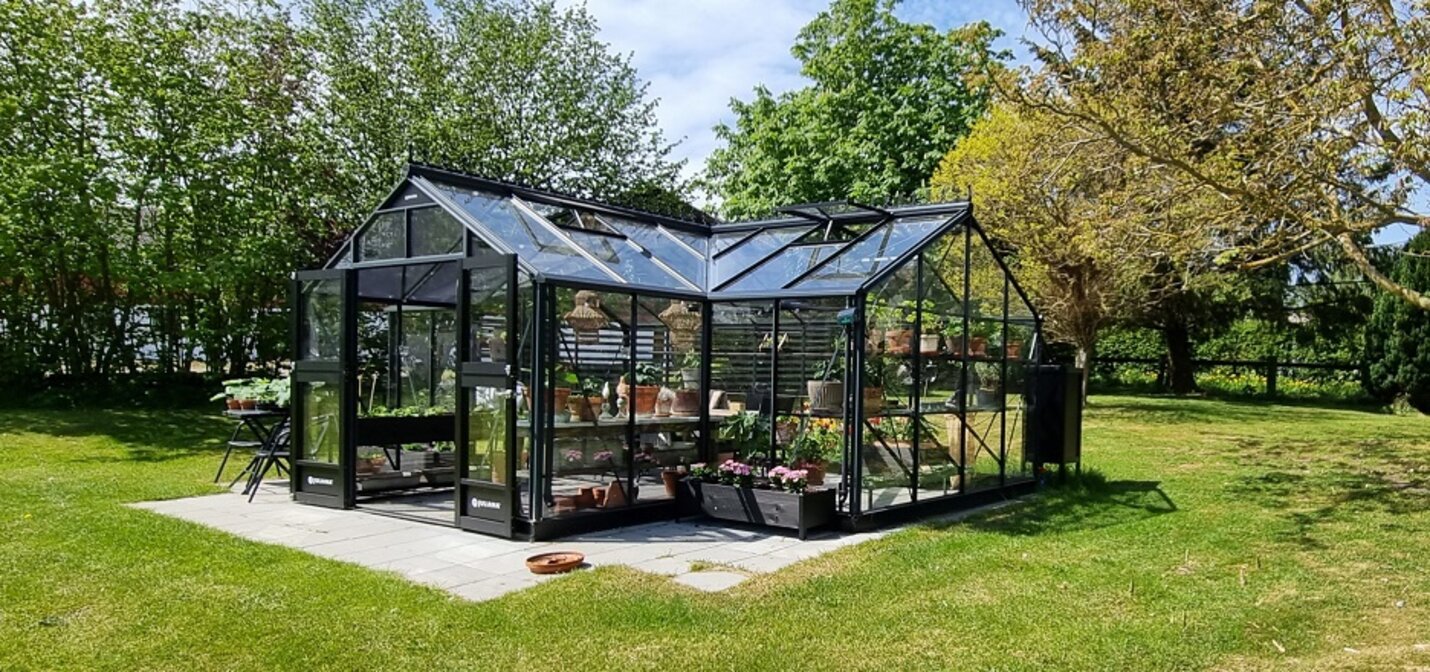
You are probably the happy owner of a greenhouse, or you are in the process of getting one. There are many types of greenhouses on the market, and in general, they resemble each other a lot. However, there are significant differences that are good to know.
It is indeed possible to "spot" a good quality greenhouse compared to the cheaper models. After reading this article, you will easily be able to see the difference. This is valuable knowledge if you are about to buy a greenhouse. In this article, we focus on freestanding greenhouses instead of lean-to or mini greenhouses.
Knowledge about the structure and different components of a greenhouse is important for several reasons:
- Best light exposure
- Best indoor climate
- Best and most solid structure.
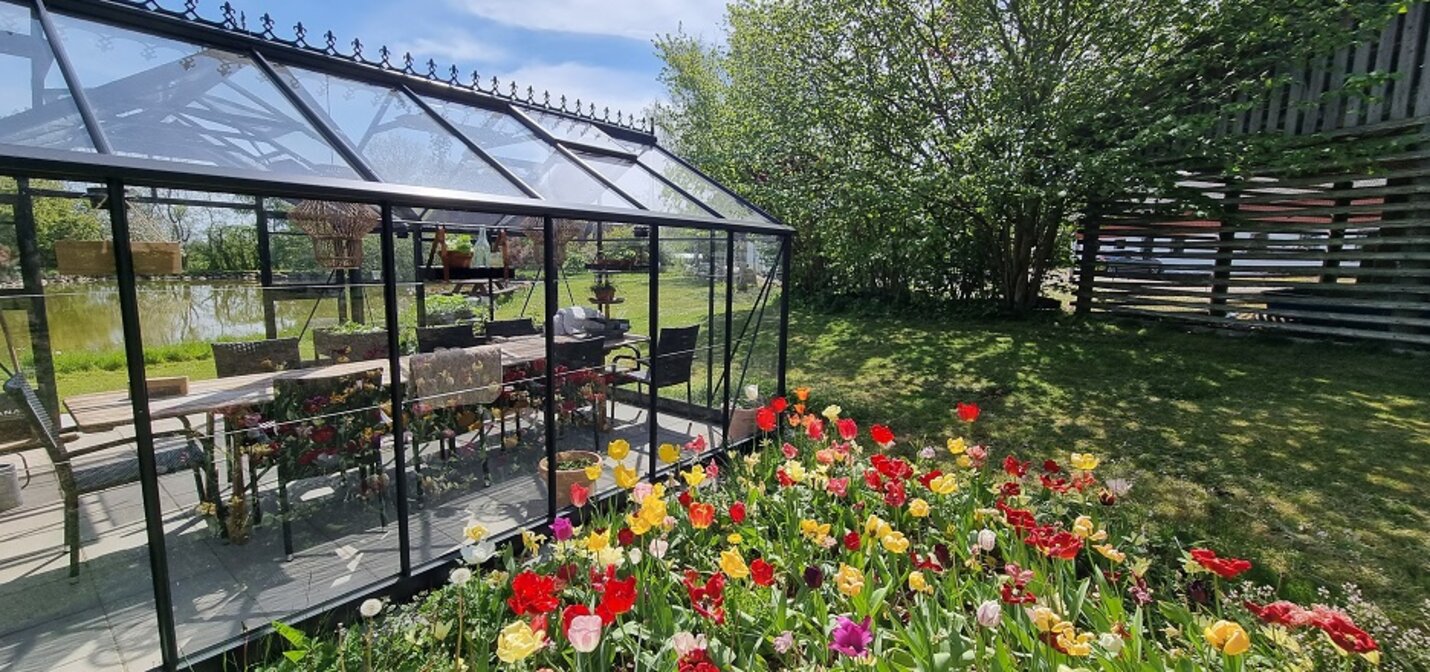
The Eave Height
Eave height is also known as the height of the sides or walls of the greenhouse. In the first picture, it is 1.75m. It is important for the eave height to be as high as possible.
Both cucumbers and tomatoes can grow several meters tall, and if the eave height is low, the plants will quickly reach the ceiling of the greenhouse.
A greenhouse with a good eave height contains a large air volume. This contributes to a healthy indoor climate where humidity can be maintained at a healthy level for both you, when spending time in the greenhouse, and for the plants.
The minimum eave height should not be lower than 1.50m.
In many cheap greenhouse models, the eave height is low. In greenhouses with a low eave height, you will often see more condensation and water drops on the greenhouse glass, which is a sign of poor indoor climate with large fluctuations.
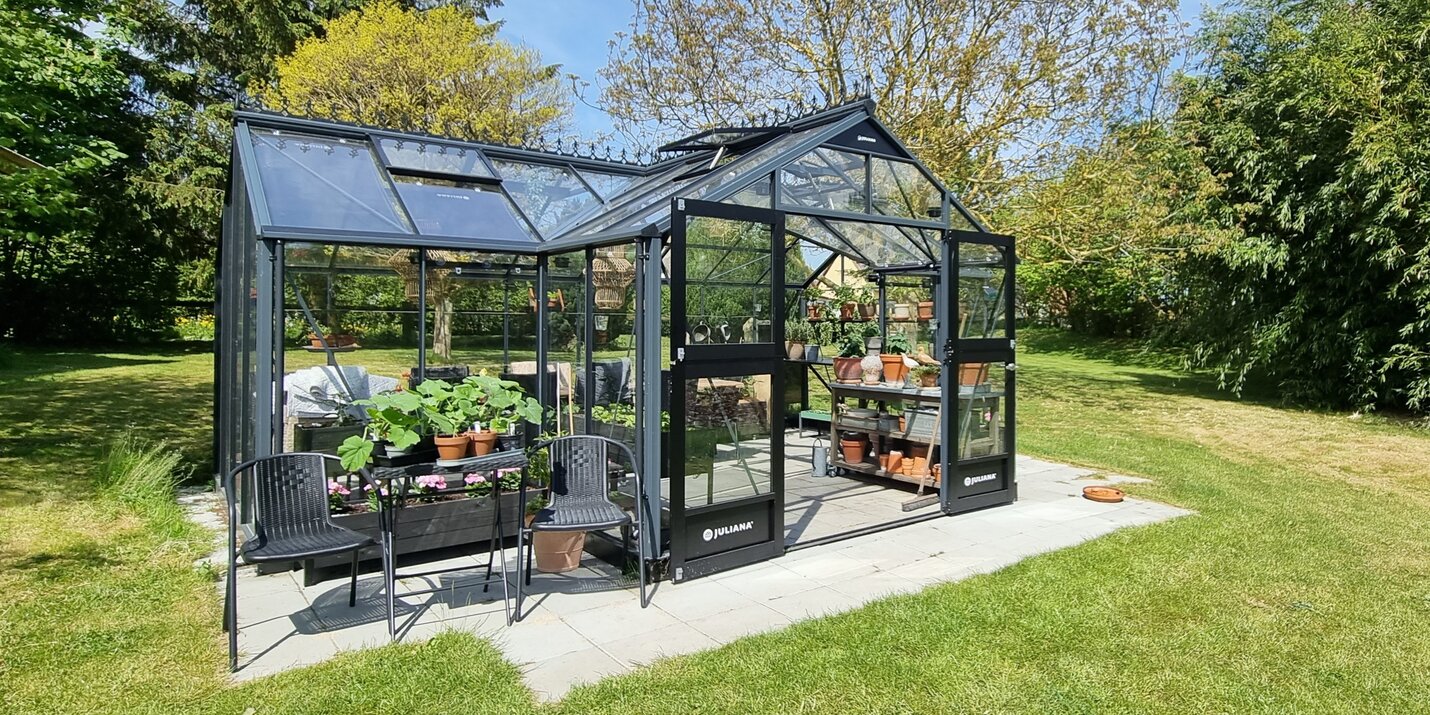
The Roof Pitch
It is important to get as much light as possible into the greenhouse all year round, especially if you also grow plants during the winter months. There is a difference in how much light the different greenhouse structures allow to reach the plants.
When sunlight hits the greenhouse glass, a part of the light will be reflected outward again. This is what we often experience as a glare. Approximately 15-20% of the sunlight is reflected or absorbed by the glass. The remaining amount will pass through the glass and into the greenhouse. That is the amount of sunlight the plants can use for photosynthesis. How much light passes through the glass to the plants depends on several factors, such as the greenhouse construction and the roof pitch.
The Nordic sky has a low sun height during winter. In larger industrial greenhouses in Denmark, the roof pitch is between 25-27°. All Juliana greenhouses are very close to this pitch, namely with a roof pitch of 30°. This roof pitch provides good light exposure. The farther north you go, the steeper the roof pitch needs to be for optimal light exposure. The opposite is true in Southern Europe, where a roof pitch of 20-23° is better suited.
The roof pitch of cheap greenhouse models is often quite steep to minimise the weight-bearing of the wall construction and to lower the eave height. That is why, it is also possible to use a slenderer aluminium profile, which is cheaper. Unfortunately, that means less light is reaching the plants, especially during winter.
The closer the roof pitch is to the optimal, for example 25-27°, the stronger the structure has to be for the greenhouse to be stable, but the more light is also reaching the plants inside the greenhouse.
Ventilation Options
Ventilation is very important in a greenhouse as well. All of us with greenhouses are familiar with a hot greenhouse in summer.
Greenhouses quickly become uncomfortably hot if not properly ventilated. It is not only us humans who find an overheated greenhouse uncomfortable. Plants evaporate, just like we sweat, to maintain a healthy temperature. Plants do not thrive in temperatures above 25-30 degrees. A plant can evaporate many litres of water during the summer to stay cool. In fact, it is said that a forest evaporates as much water as an open lake. Inside your greenhouse, litres of water evaporate daily. Therefore, good ventilation is important.
There is a basic rule according to the construction of hobby greenhouses:
10% of the greenhouse’s base area should be reserved for ventilation options. That means, if your greenhouse is 10 m², 1 m² should be used for ventilation options, for example windows and doors.
It is often seen in cheap greenhouse models that this rule is not followed. It is simply cheaper to produce the greenhouse with fewer windows and a single door instead of a double door and many windows.

Price and Quality Go Hand in Hand
Look for these three important elements when purchasing your first greenhouse. By focusing on these three elements, you will end up with the best quality and most solid greenhouse structure. Quality and price go hand in hand when it comes to greenhouses. Good greenhouses are simply expensive to produce. They require more raw materials, but you also get a much better greenhouse.
Look out for
- High eave height
- Optimal roof pitch
- Proper ventilation options
Thanks to horticultural graduate, Bent Løschenkohl
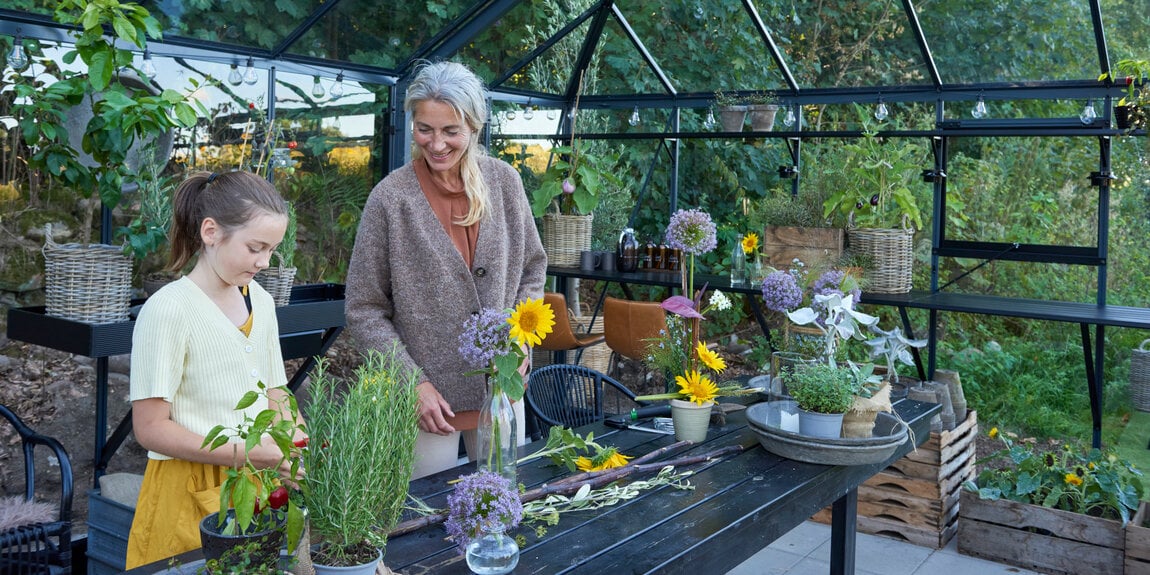
Inspiration til dit drivhus?
Er du på udkig efter ny inspiration til at forvandle dit drivhusliv til et frodigt paradis? Lad os sammen udforske nye ideer og tips, der vil gøre dit grønne fristed endnu mere magisk!
JULIANA GRUPPEN
Juliana Gruppen er en førende global leverandør af kvalitetsdrivhuse til private. Virksomheden blev grundlagt i 1963 af Mogens A. Stærmose i Odense, Danmark. Den familieejede virksomhed ejes i dag af 3. generation, Nikolaj Stærmose. Hovedkontoret og fremstillingen er stadig beliggende i Odense med datterselskaber i Storbritannien og Tyskland. Juliana Gruppen eksporterer til mere end 20 lande.
’We help people grow’. Derfor sætter vores brands Halls, Juliana og Gabriel Ash rammen for oplevelser, der er lige så naturlige, som de er magiske. Til trods for vores lange historie er vi fremadskuende og nysgerrige på, hvordan vi kan forbedre bæredygtigheden af vores drivhuse. Få mere at vide om Juliana her på siden og find inspiration til dit drivhusliv i vores store inspirationsunivers.
